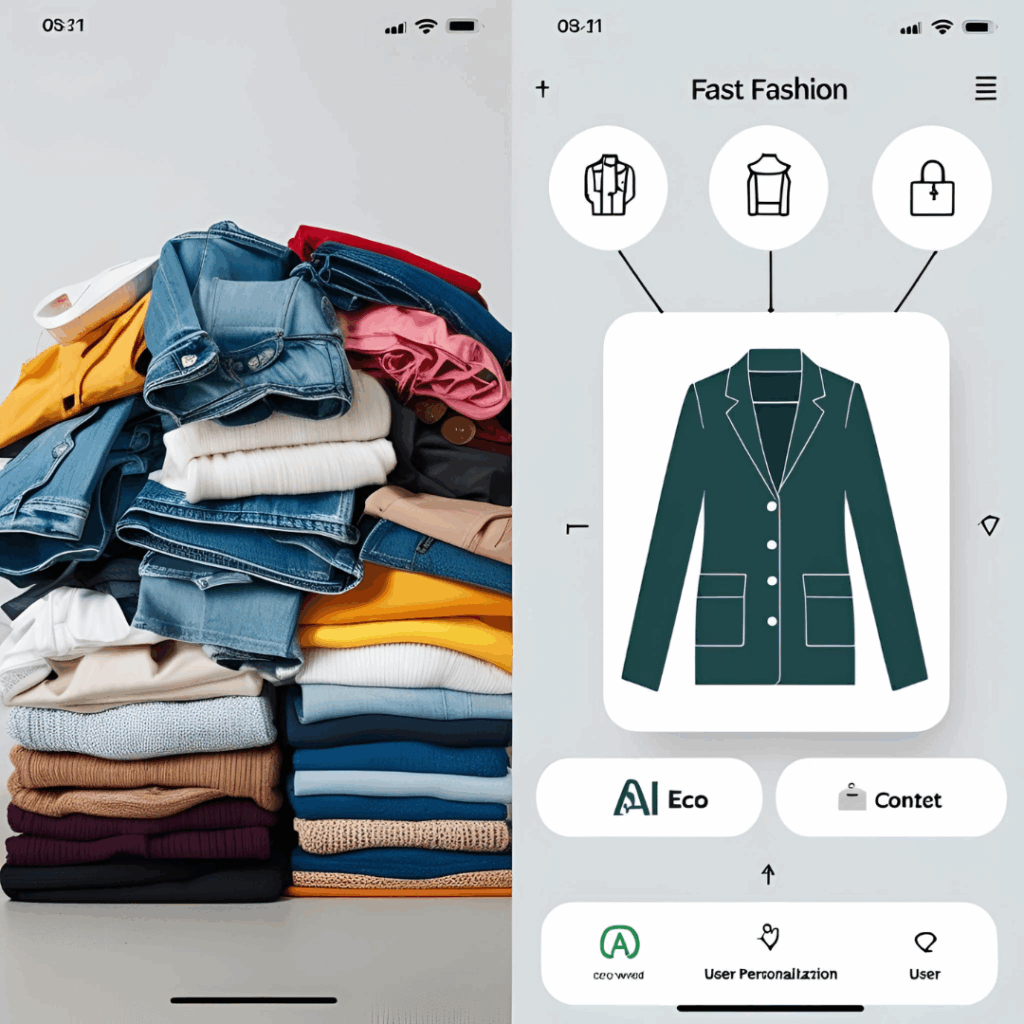Fast fashion has long dominated the retail landscape, offering low-cost, trend-driven clothing designed to be worn a few times and discarded. Fueled by aggressive marketing, social media trends, and a culture of immediacy, consumers often buy more than they need — and faster than ever before. This behavior results in overflowing wardrobes, underutilized garments, and millions of tons of textile waste each year.
As concerns about climate change, labor conditions, and overconsumption grow louder, fashion tech — especially artificial intelligence — emerges as a potential solution. The question is no longer just whether we can produce more sustainably, but whether we can consume more mindfully. Can AI help us pause before we click “buy”? Can it make us better, more conscious consumers?
The Psychology Behind Impulsive Fashion Consumption
To understand how AI can help curb impulsive shopping, we first need to examine the forces behind it. Fast fashion brands rely on a high-speed model of constant novelty: new collections drop weekly, marketing triggers emotional buying, and fear of missing out (FOMO) fuels urgency. The cycle is addictive — and AI plays a role here too, but traditionally as part of the problem.
Recommendation engines and targeted ads learn your preferences and bombard you with personalized offers. These systems are designed to maximize conversion, not satisfaction or sustainability. However, this same technology, when redirected, can help fight back against overconsumption.
From Persuasion to Intention: The Shift in AI Purpose
Modern fashion tech startups and ethical brands are reprogramming AI systems not to sell more, but to sell better. Instead of encouraging impulsivity, they aim to build tools that foster self-awareness, intention, and long-term satisfaction.

1. AI-Powered Style Profiling and Wardrobe Integration
One of the ways AI can promote conscious consumption is through highly personalized style analysis. Instead of recommending what’s trending, smart platforms assess your existing wardrobe, your actual lifestyle needs, and your long-term aesthetic preferences. These tools analyze your past purchases, frequency of wear, and even climate data to recommend only items that will truly add value to your closet.
Some apps go a step further by using computer vision to scan your wardrobe and suggest outfits from what you already own — reducing the need to buy more. When a purchase is suggested, it’s because the system has identified a real gap, not just because a brand paid to show it to you.
2. Conscious Checkout and AI-Driven Delay Mechanisms
Innovative retailers are experimenting with AI-powered checkout features that introduce a “cooling off” period for certain purchases. For example, if the system identifies impulsive patterns — such as repeated purchases within 24 hours, or items in your size that resemble something you already own — it might ask:
“Are you sure you need this? Here’s what you bought recently.”
This gentle interruption can create just enough friction to break the automatic consumption loop. Some platforms even offer sustainability scores or environmental impact estimates at checkout, nudging users toward more thoughtful decisions.
3. AI and Emotional Pattern Recognition
Advanced AI models can now analyze emotional cues in user behavior — from browsing speed to interaction frequency. If a user shows signs of stress-driven shopping or dopamine-seeking behavior, the system might shift to offering supportive prompts instead of more products:
- “You’ve added 5 similar items to your cart in the last hour. Would you like to review them together?”
- “Many users in your situation found it helpful to save favorites and wait 24 hours.”
By moving from manipulation to mindfulness, AI becomes a shopping partner instead of a silent salesperson.
Personalized Shopping with Purpose
Not all shopping is impulsive or wasteful — fashion is a form of self-expression and identity. The goal of conscious consumption isn’t to eliminate shopping, but to align it with personal values and real needs. AI excels at personalization, and when this is applied ethically, it can guide consumers toward purchases that are:
- Better fitting (thanks to virtual try-ons and body scanning)
- Higher quality (filtered by durability and craftsmanship)
- More versatile (suited to your existing wardrobe and lifestyle)
- Ethically made (matched with brands that align with your values)
Instead of hundreds of low-impact garments, users are guided to invest in fewer, more meaningful pieces — often from sustainable or slow-fashion labels.
Breaking the Fast Fashion Algorithm Loop
One of the most challenging aspects of fighting impulsive consumption is the current architecture of social media and e-commerce. Platforms like TikTok and Instagram reward novelty and speed. Hauls, flash sales, and microtrends are constantly trending. Even with the best intentions, users are exposed to thousands of product impressions per week.
Some solutions are now emerging through AI-powered digital filtering. Browser extensions and shopping platforms are offering tools that block fast fashion sites or flag products that come from high-impact sources. Others provide real-time ethical ratings and alternative suggestions based on sustainability data.
As AI becomes more embedded in the shopping process, we can train our feeds — and our minds — to prioritize long-term value over short-term excitement.

A Cultural Shift Led by Data
Technology alone won’t solve overconsumption, but it can create the conditions for behavior change. When paired with education, storytelling, and social proof, AI becomes a catalyst for a more intentional consumer culture.
Imagine a fashion ecosystem where:
- Your digital wardrobe helps you plan purchases for the year.
- Your AI stylist reminds you of what you already own before suggesting new buys.
- Brands only produce what has been pre-ordered, based on actual demand forecasts.
- Algorithms reward slow shopping, not fast clicks.
This future is not far off — and fashion tech is leading the way.







